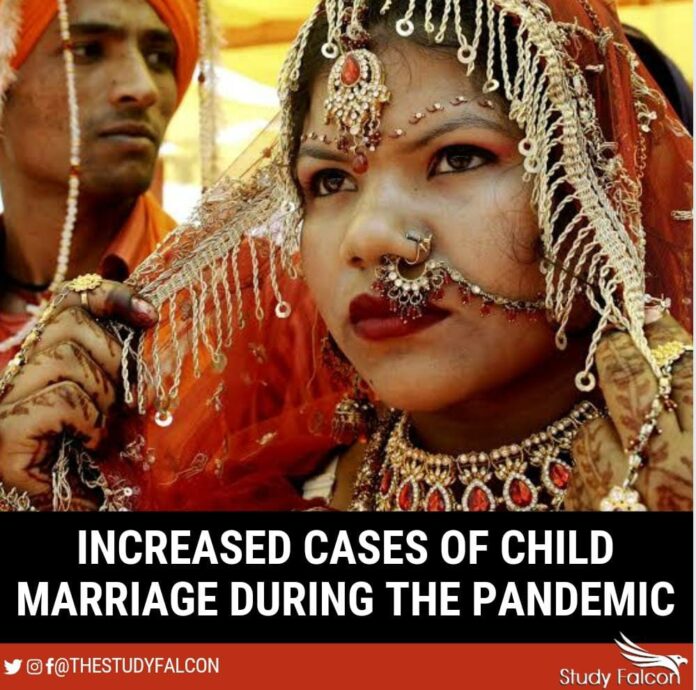In a report published by ChildLine India, the pandemic and the subsequent lockdown have proved to be new drivers of child marriages in rural Madhya Pradesh. There has been a significant increase in child marriages during these COVID times.
As the lockdown got more severe, the issue of child marriage also gained momentum. In June itself, the Central government started to receive various pleas and phone calls to prevent this act.
Some key findings from this report are-
- Madhya Pradesh recorded 46 child marriages between November 2019 and March 2020, a figure that jumped to 117 in just three months of the lockdown from April to June 2020.
- Across India 5,214 child marriages were reported in the first four months of lockdown between March to June.
- Some parents consider the age period of 15-18 as unproductive, especially for girls, so they start finding a match for their child during this age period.
- Underage girls are more prone to child marriage than boys.
- Child Marriage is associated with higher rates of Sexually Transmitted Infections, including HIV.
- The risk of maternal mortality is highest for adolescent girls under 15 years of age. They have 23% greater risk of disease onset including heart attack, diabetes, cancer, and stroke. They also face a high risk of psychiatric disorders.
There are several reasons why parents marry off young daughters and most of it has to do with family income, liability and gender roles. A major reason could be that a girl child is viewed as liability as the girl relies on the family for her financial needs. There might be an easy solution which is education. There are ample laws and schemes to provide for the education especially for the girl child like – The Right To Education Act that makes education free and compulsory up to the age of 14. But there is a high probability that she would be taken out of the school again for various reasons like sanitation, safety, menstruation etc. Research shows that after a girl is taken out of school at the age of 15, there is a strong possibility of her getting married at an early age. Law and Order are still not able to provide a secure environment for the girls in adolescent age, so some parents get their girl child married at a young age.
Girls are often seen with limited economic roles. Women’s work is generally confined to the household and is not valued in rural areas. In addition, there is the problem of dowry. Despite the fact that dowry has been prohibited for five decades (Dowry Prohibition Act, 1961), it is still common for parents of girls in India to give gifts to the groom and/or his family either in cash or kind. Economic pressures due to the pandemic have pushed poor parents to marry off girls early. Child Marriage also contributes to larger families and in turn, population growth. This delays demographic dividend that would have come from reduced fertility and investment in education.
Marrying off underage girls makes them vulnerable as they don’t get a holistic growth. Hence, they are not aware of their basic rights like Right to Education, Right to Property, etc. This can often lead to domestic violence and sexual abuse. Since child brides are not able to complete their education, they remain dependent and underpowered which acts as a big hurdle towards achieving gender equality.
There are child marriage preventing laws and schemes that exist in India like – The Child Marriage Restraint Act of 1929 restricts the practice of child marriage. The Special Marriage Act, 1954 and the Prohibition of Child Marriage Act, 2006 prescribe 18 and 21 years as the minimum age of consent for marriage for women and men respectively. The Prohibition of Child Marriage Act, 2006 was enacted to address and fix the shortcomings of the Child Marriage Restraint Act. Union Ministry for Women and Child Development set up a committee to examine matters pertaining to age of motherhood, imperatives of lowering Maternal Mortality Ratio and the improvement of nutritional levels among women. But even after decades of facing the same issue and having laws to prevent it, this practise has been prevalent in India.










